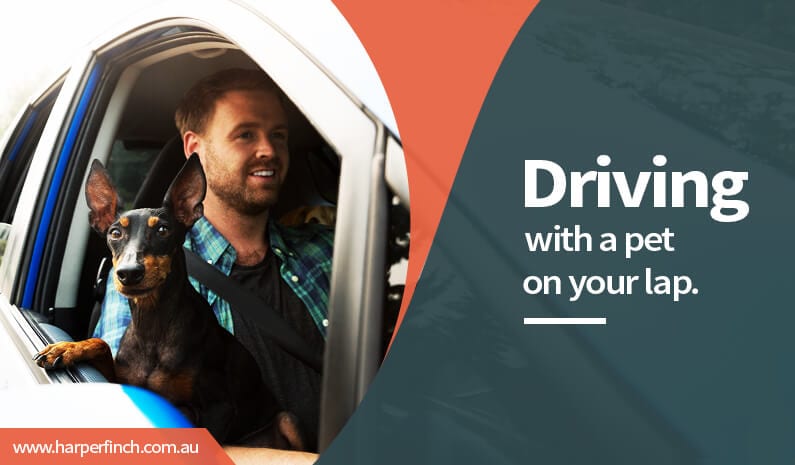It is no secret that Queenslanders love their pets. In fact, around 37% of Queensland households own one or more dogs and about 26% own one or more cats. Many more people own fish, birds and other animals.
Queenslanders also love their car trips, whether it’s just to their local supermarket or on a long road trip to Sydney. It’s therefore no surprise that many drivers want to bring their pets along for the ride.
But do you know what laws apply to you if you have your pets in your car while driving? Do you know how to keep your pet safe while they are in your car? Read on to find out all the answers.
Driving With Pets On Your Lap
It’s not uncommon for drivers to see other drivers driving with their pets (usually dogs) sitting on their laps.
This is actually an offence under section 297(1A) of the Queensland Road Rules which states that “a driver must not drive a vehicle if a person or an animal is in the driver’s lap”. Therefore, it doesn’t matter whether it’s your Great Dane or your goldfish in a small bowl – it is against the law in Queensland to drive with it on your lap.
This offence is punishable by a fine of up to 20 penalty units which is more than $2,000.
Restraining Pets In Your Car
Many people assume that it is a legal requirement to restrain animals when they’re being driven. Surprisingly, there is in fact no law in Queensland that states you must restrain your pet when you’re travelling with them in your car.
However just because you don’t legally need to restrain your pet, it is still strongly recommended that you do it anyway.
Firstly, you can be charged with an offence if the animal interferes with your driving in any way. For example, your pet dog might jump onto your lap causing you to be distracted. If this happens and you cause an accident, you could be charged with careless driving or even dangerous driving.
Secondly, restraining your pet is important for its health and safety as there is a very real risk of your unrestrained animal being hurt or killed. In Australia, more than 5,000 pets are injured or killed every year as a result of road accidents. Therefore, if you are in an accident or if you are forced to brake suddenly, a properly fitted restraint may help to prevent your pet from serious injuries.
Driving With Pets In The Back Of A Ute
You are legally allowed to drive with pets in your ute tray as long as they are properly restrained. This is especially important due to the extra risks that pets in utes face. These risks include:
- Falling over the side of the ute onto the road;
- Falling over the edge and choking on their leash; and
- Exposure to extreme weather elements such as heat.
It is also a law requiring that all loads in the back of a ute be properly secured and animals in utes are considered a “load”.
How To Restrain Your Pet
The most appropriate way to restrain your pet will obviously depend on the animal you’re transporting. Your best option is to speak with your local pet shop so that you can receive proper advice for your pet. Some of the options that may be available to you include car harnesses and pet carriers.
If you have a ute, your best option is likely to be an enclosed cage that is big enough for your pet to move around in and covered for shelter.
You should also always try to restrain your pet in the back seats instead of the front passenger seat. Most cars nowadays have airbags in the front passenger seats which could cause serious injury to your pet if activated following an accident.
Lastly, be careful about driving with windows that are too wide open. You should ensure your windows are closed enough to avoid any chance of your pet jumping out.
Driving with pets can be a fun and rewarding experience but make sure you follow the above tips to avoid your trip becoming a disaster.

